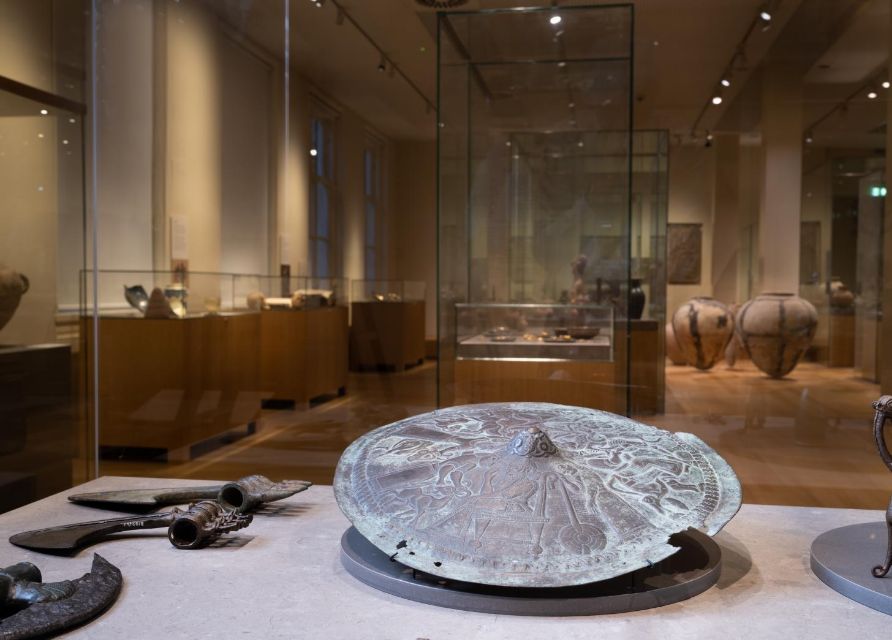Determining antiquity
This is our starting point, a bull rider. We will rotate the shield for your convenience, but before we do so, first a bit of background.
This shield is in the collection of Rijksmuseum van Oudheden. It is said to have come from Luristan, a mountainous region in the southwest of Iran. Archaeologists have excavated several graveyards, but little is known about the people or the places where they lived. The majority of the so-called “Luristan” objects derive from the art market and do not come with information on where they were found. Most objects were likely taken out of ancient graves, but some were made in modern workshops.
All antiquity museums possess forgeries. The number of such forgeries remains unknown because it is not always clear which objects are genuine. This beautifully decorated bronze shield in the collection of the Dutch National Museum of Antiquities is one such object. Bought on the art market in 1943, it was said to have come from Luristan. Since then its authenticity has been called into question, but reaching a definitive answer has proven difficult. How can we determine its antiquity? Let's go on a journey together, and find the answers.
